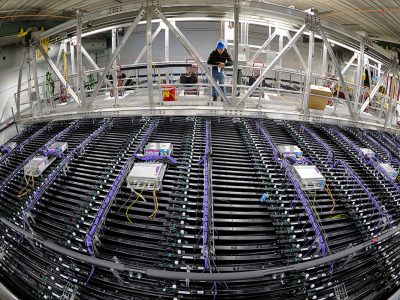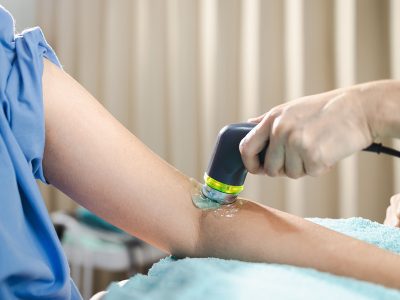
Coronaviruses, such as the one that causes COVID-19, have numerous protruding spikes salting their surfaces. When a coronavirus raises one of these spike proteins—like opening a finger to full length—it becomes capable of invading a human cell. The pointed spike can insert its key-like domain into a keyhole protein (ACE2) in the outer wall of a human cell, binding to it. And the spike protein becomes a gateway for infecting a cell.
In those moments, however, a coronavirus reveals its Achilles’ heel.
Coronavirus surfaces are mostly coated with sugars or glycans. In recent years, researchers have learned that glycans offer coronaviruses camouflage protection from antibodies, which are proteins that protect you when a potentially harmful substance enters your body. Antibodies need an exposed beachhead for an assault on a coronavirus, but glycans conceal landing areas (epitopes) and help thwart attacks.
A team of researchers have been searching for un-sugared locations on coronavirus spikes where antibodies have a better chance to attach and stop infections of human cells.
“We tested and compared seven known antibodies, and some of them work well in grabbing onto the exposed part of the spike protein,” says Atanu Acharya, assistant professor in the Department of Chemistry and member of the BioInspired Institute. “Different antibodies target different spots on the spike protein.”
As a co-first author, Acharya recently published a study in Communications Biology with lead author James C. Gumbart, associate professor in the School of Physics at the Georgia Institute of Technology. Acharya performed this research while a postdoctoral fellow at Georgia Tech and is continuing his studies of coronavirus antibodies at his Syracuse University lab.
To simulate un-sugared locations exposed on opening and closing spike proteins, the team used the fastest computer available in the United States to model the corona of the novel coronavirus SARS-CoV-2—the virus which caused COVID-19. The supercomputer, Summit, is housed at Oak Ridge National Laboratory in Tennessee.
“We used this ‘computational microscope’ to look at atomistic details of the entire route as the spike opens and how antibodies can play a role by attacking this gateway when that happens,” Acharya says. “We wanted to understand why one antibody is better than the others and why some antibodies are more successful in attacking parts of the spike protein.”
Antibodies race to stop a coronavirus infection from crossing the spike gateway and entering a cell. And the coronavirus races to complete the infection process before antibodies destroy it. Sometimes this continues even when the spike key has entered the cell’s keyhole. “There are moments when antibodies can attack the coronavirus spike even when it has already attached to the cell,” Acharya says
In his lab, Acharya hopes to find a “pan-coronavirus” antibody that could treat multiple variants of the novel coronavirus and future coronaviruses.
A big mystery in developing antibodies for treatment is the complex role of glycans. These sugars are more than just shields against invading antibodies. Glycans also have multiple roles in opening and closing spike proteins. For instance, glycans function as sticky material, helping to hold a spike in an “up” position, allowing the coronavirus a chance to bind to a cell.
“Glycans play a role in stabilizing the open state of the spike protein that is crucial for infecting the cell,” says Acharya.
Glycans can also help hold a spike in a closed position, limiting its capacity to become a gate for infection.
The infectious capability of a coronavirus might depend on how rapidly it can transition its spike protein from a closed state to an open state and continue holding there to invade a human cell despite threats from antibodies. Therefore, researchers want to identify the most potent and fast-acting antibodies for the job, ones that can immediately identify the best place on the spike protein to attack.


